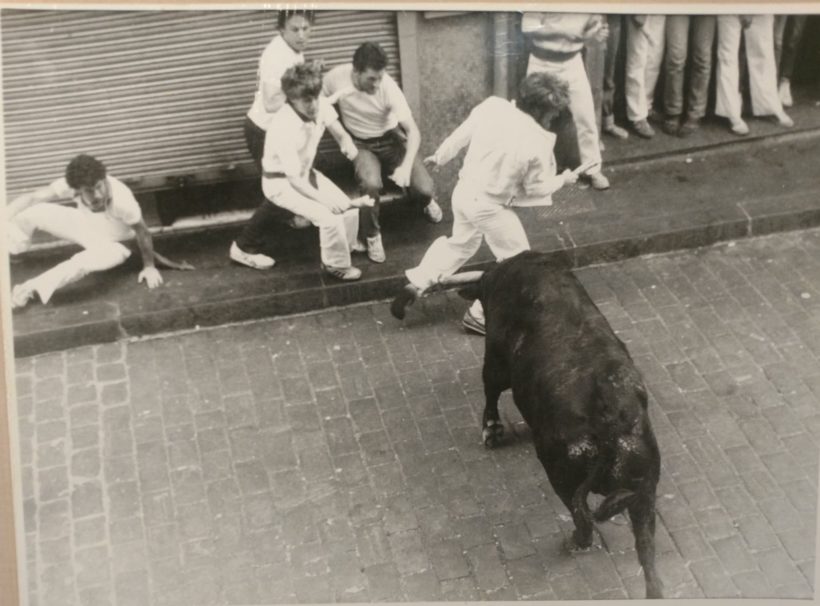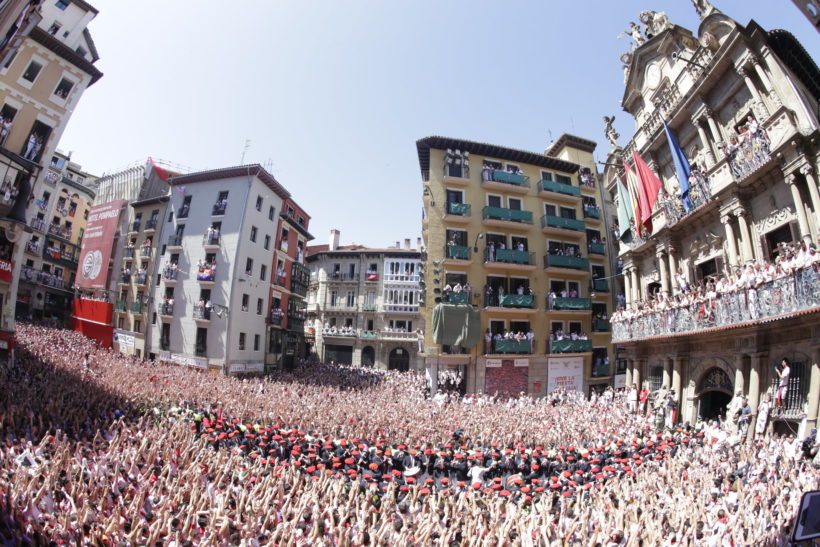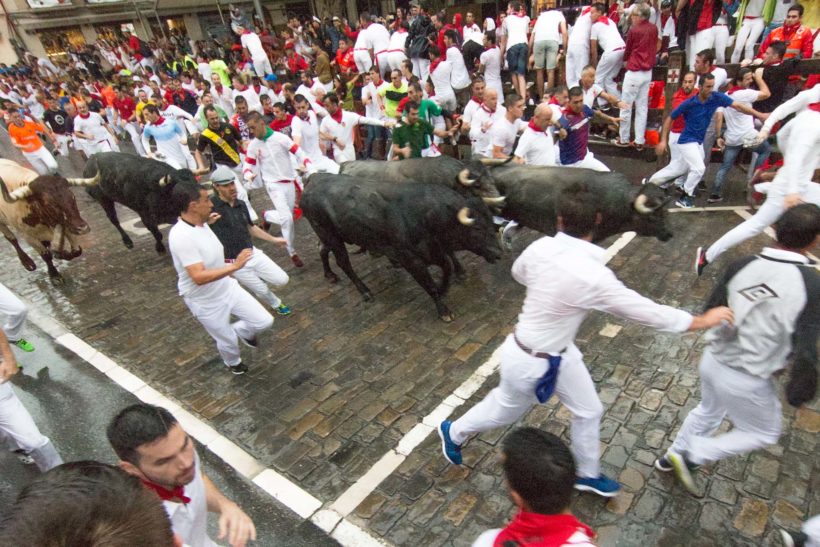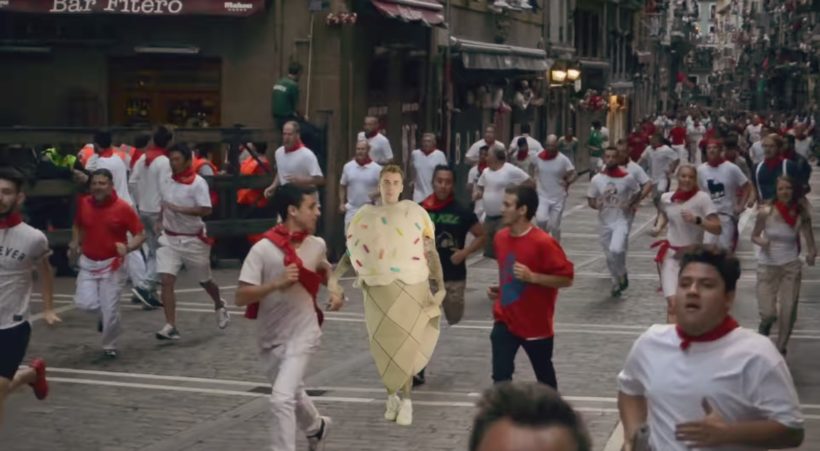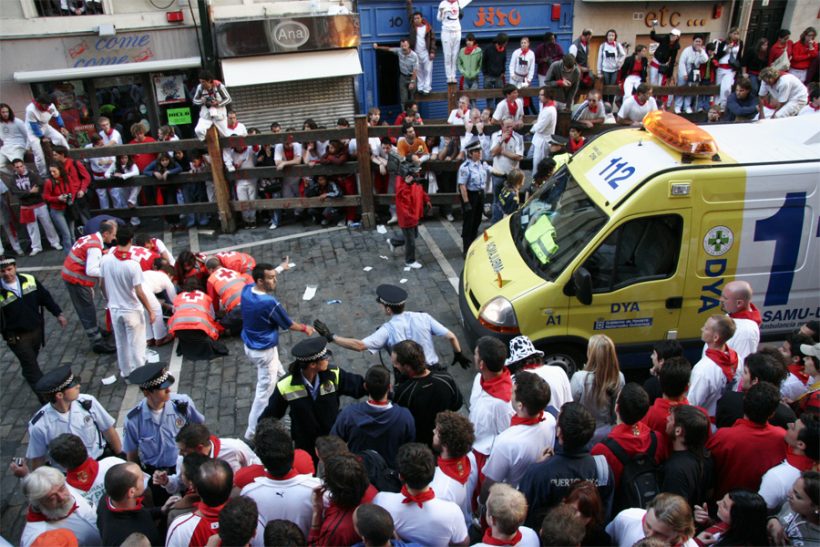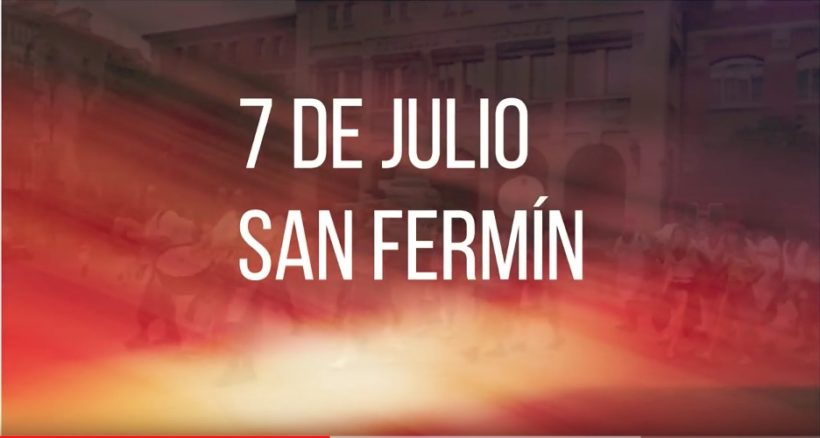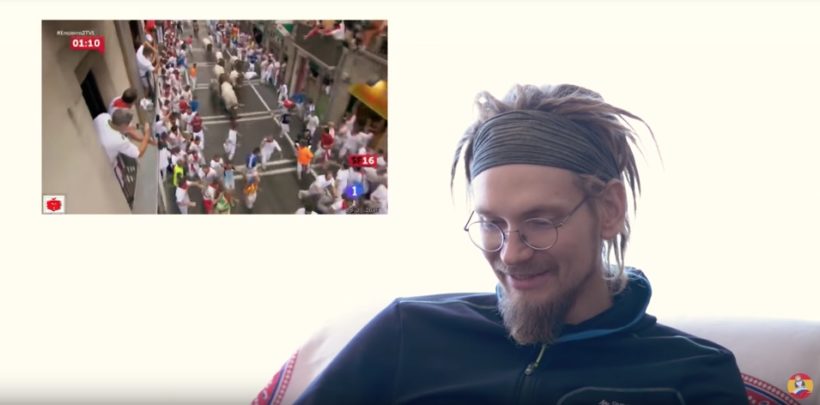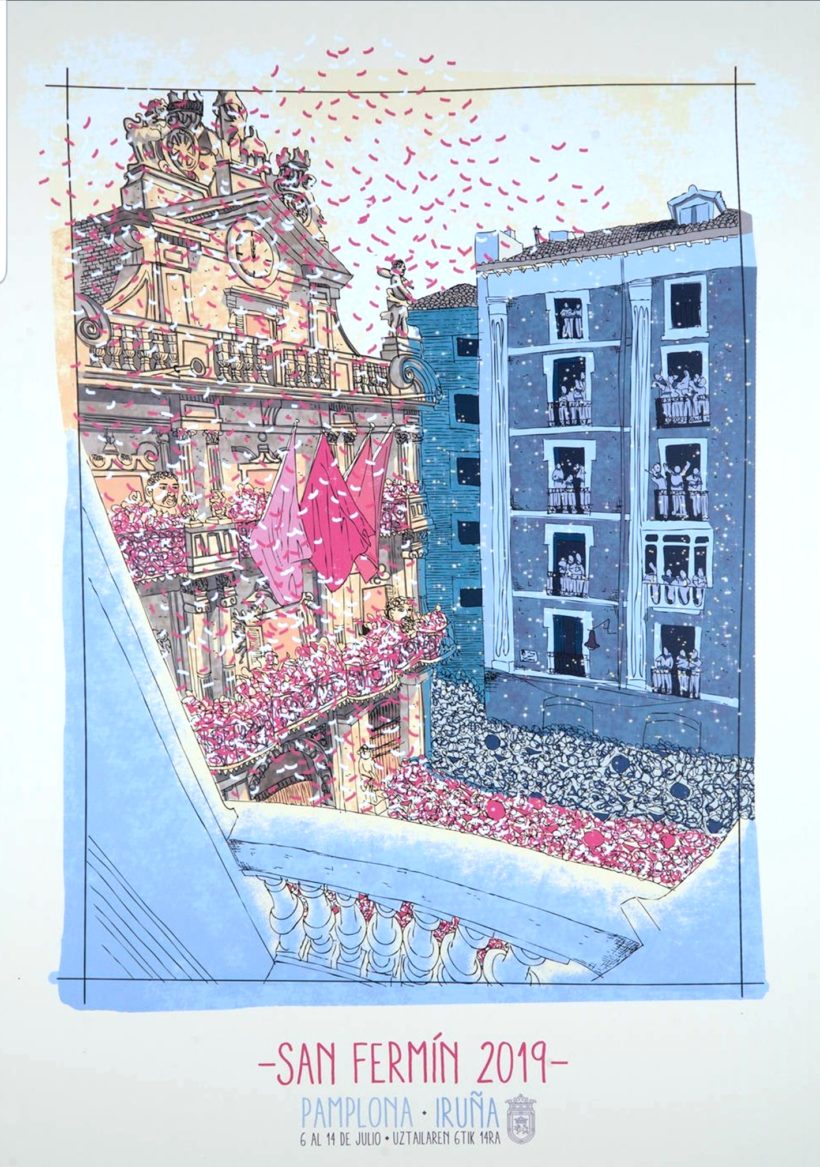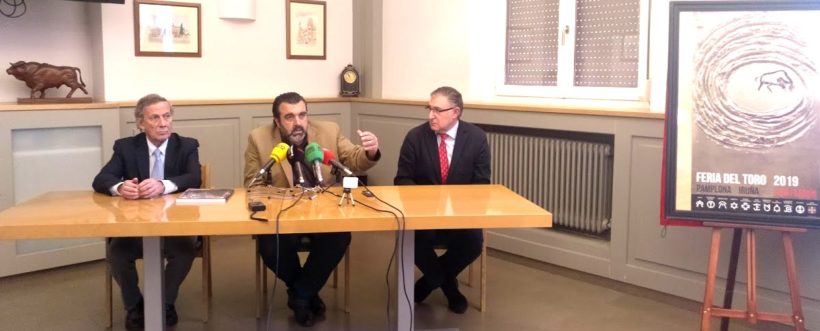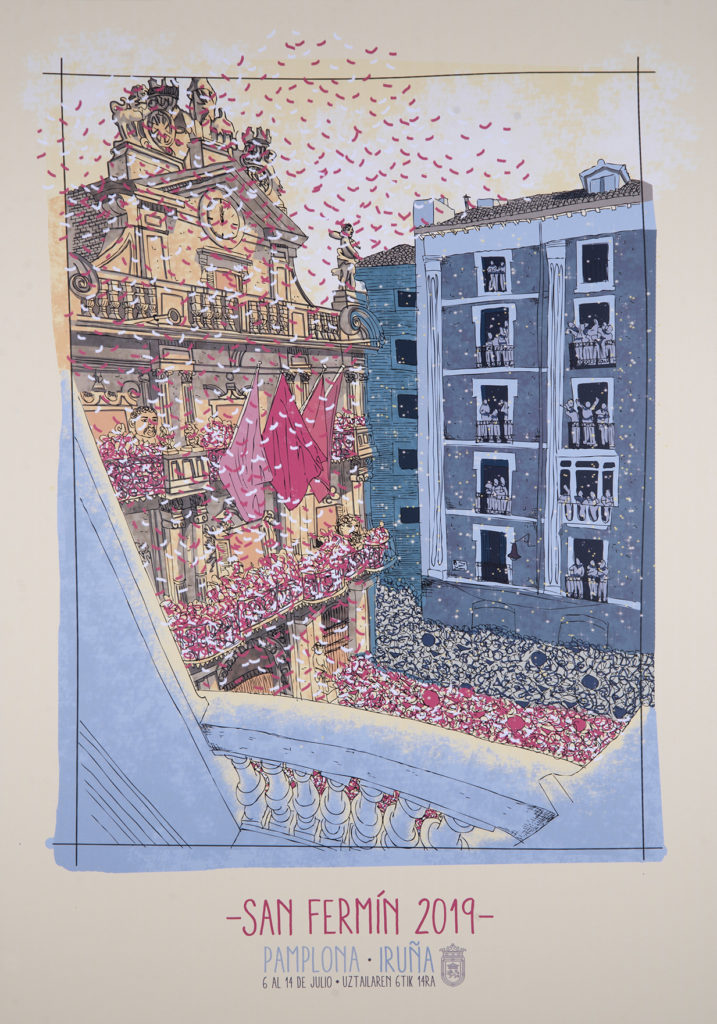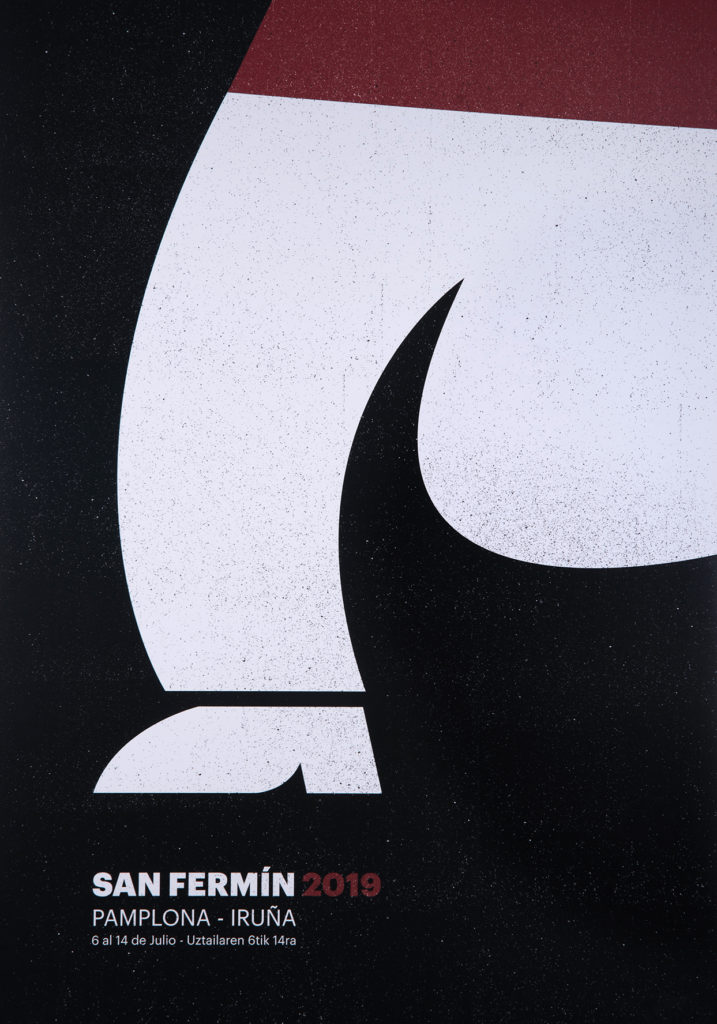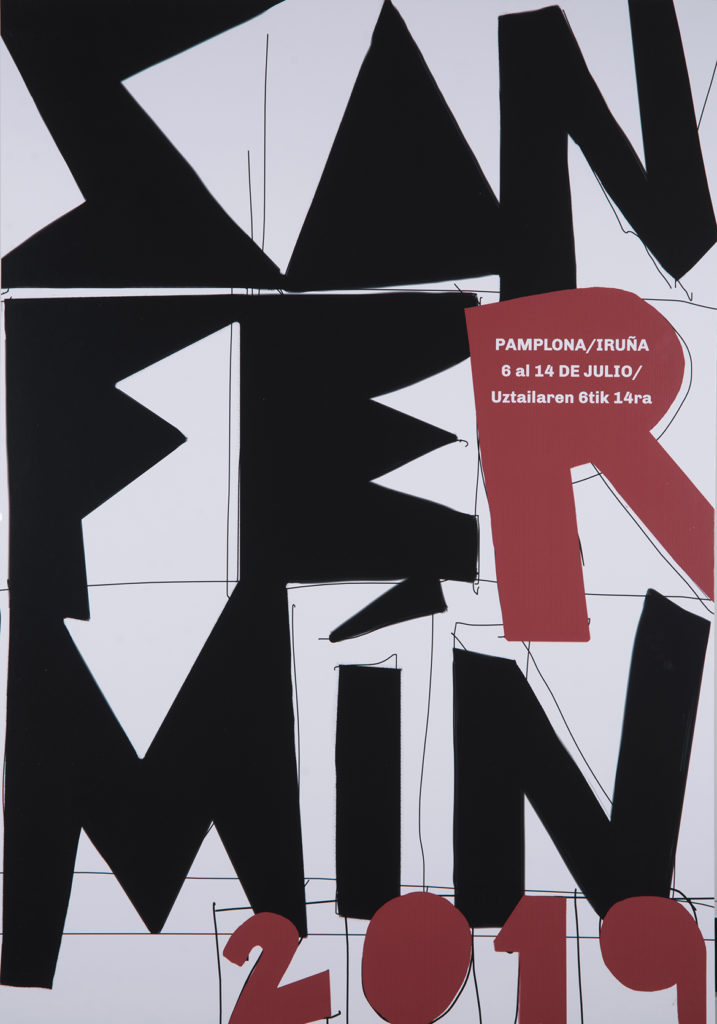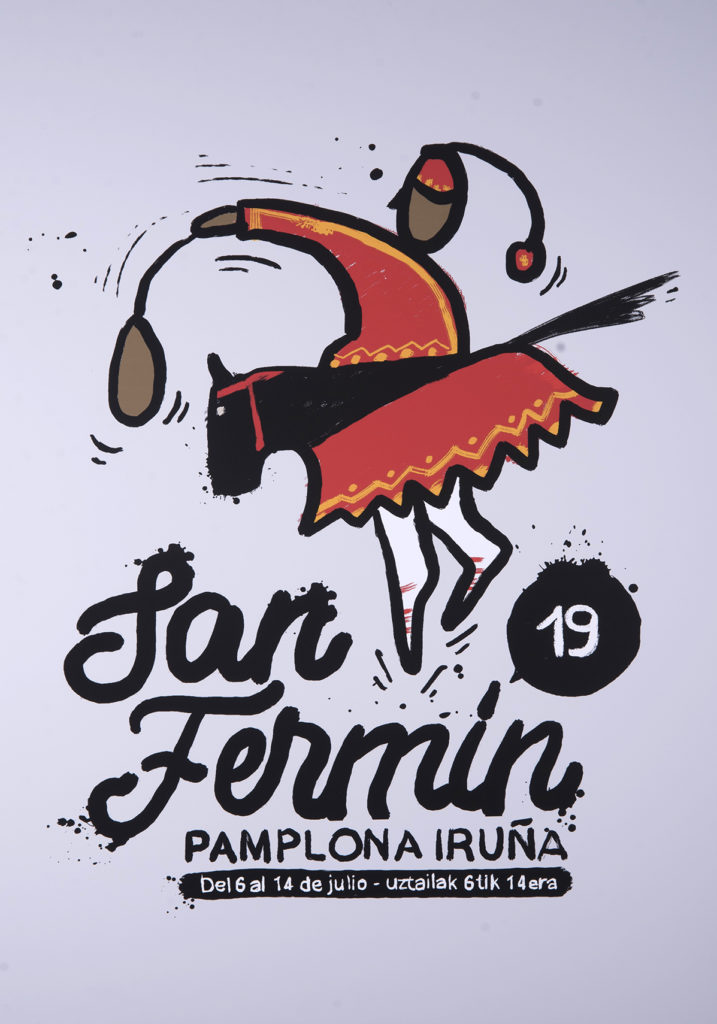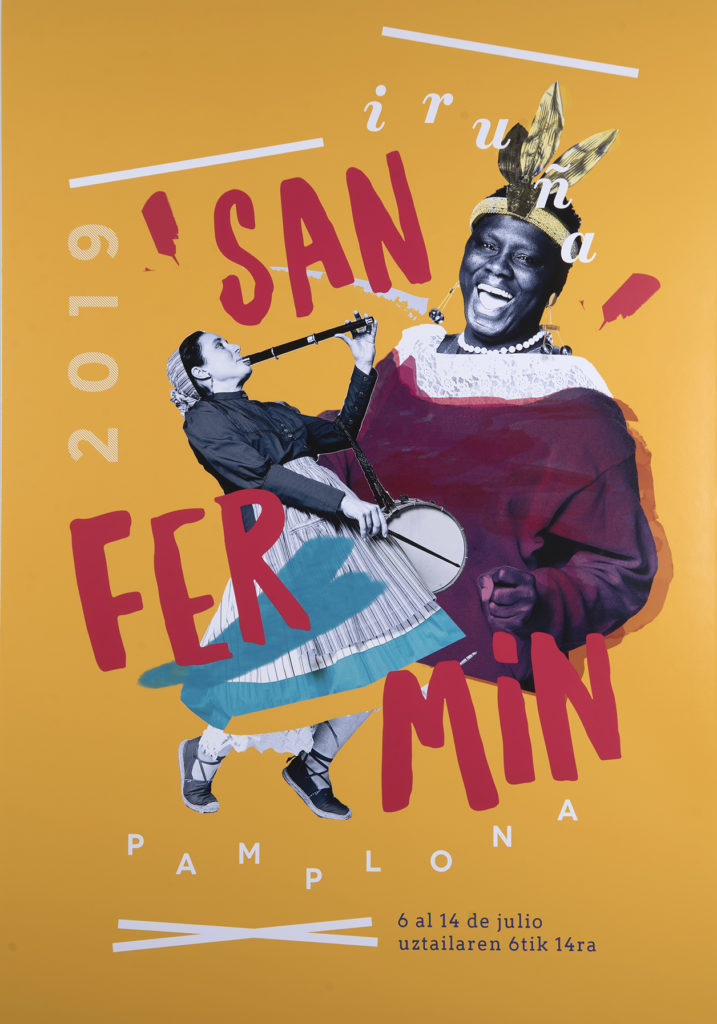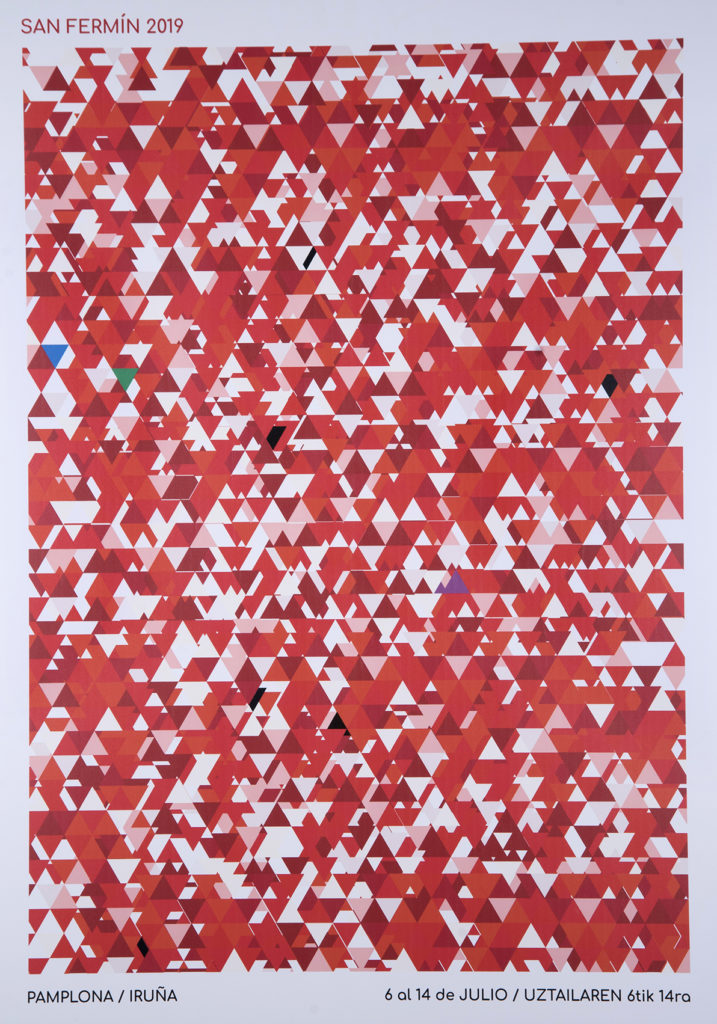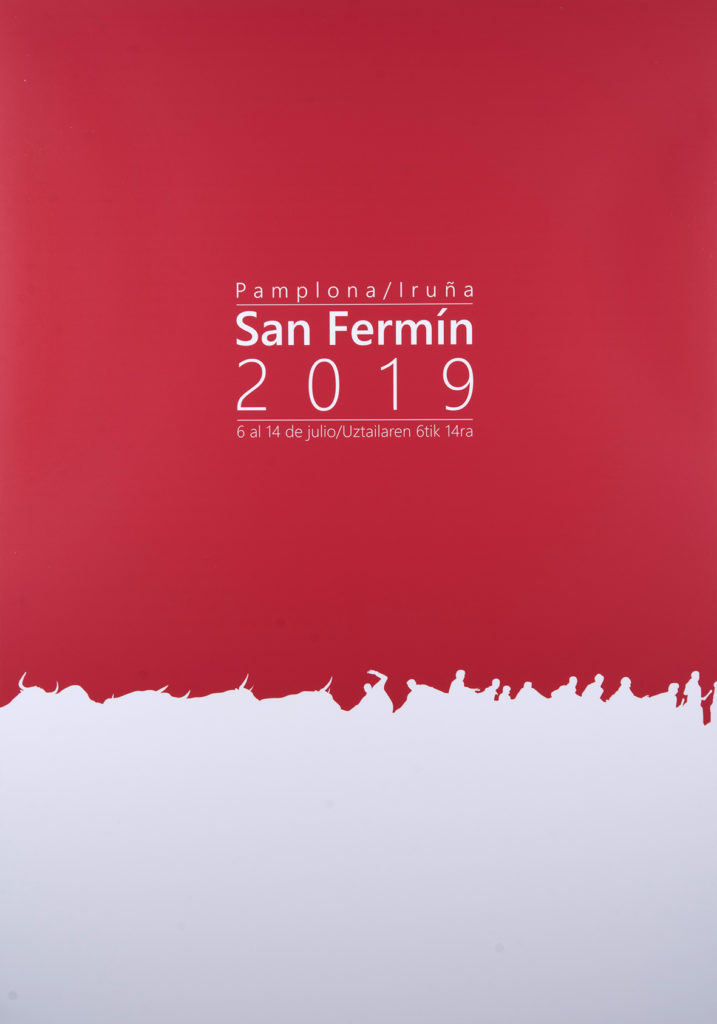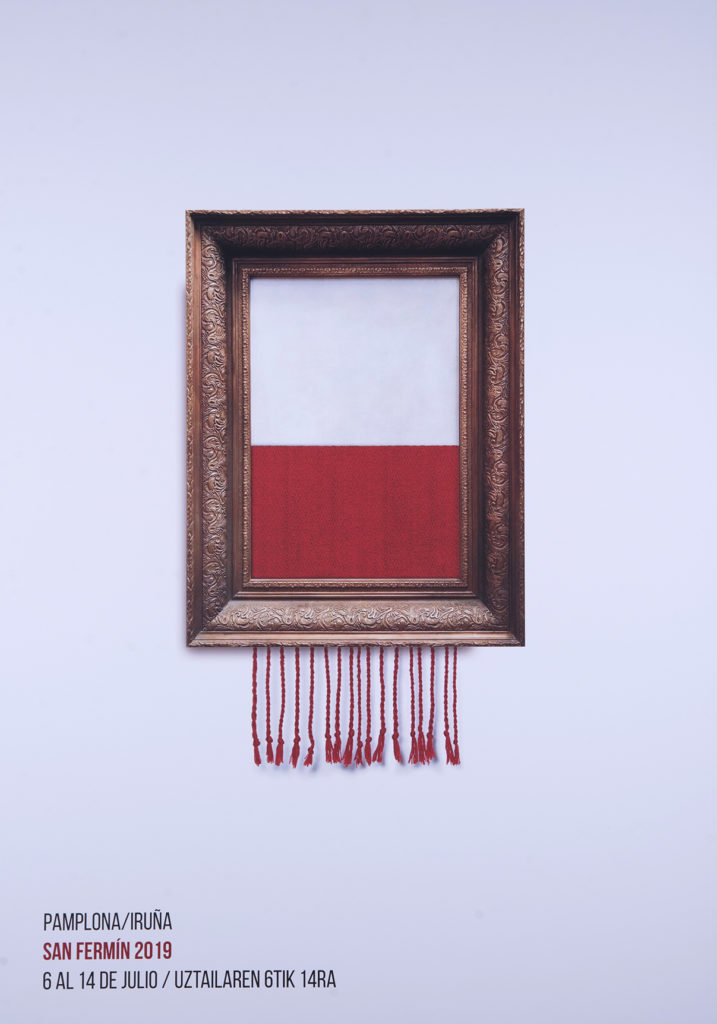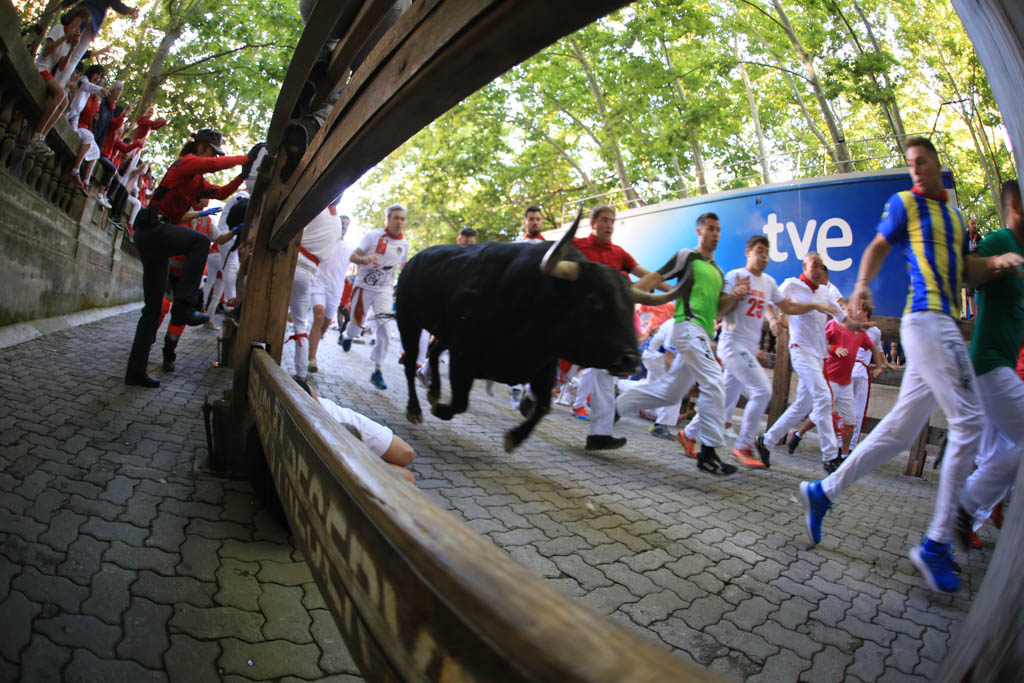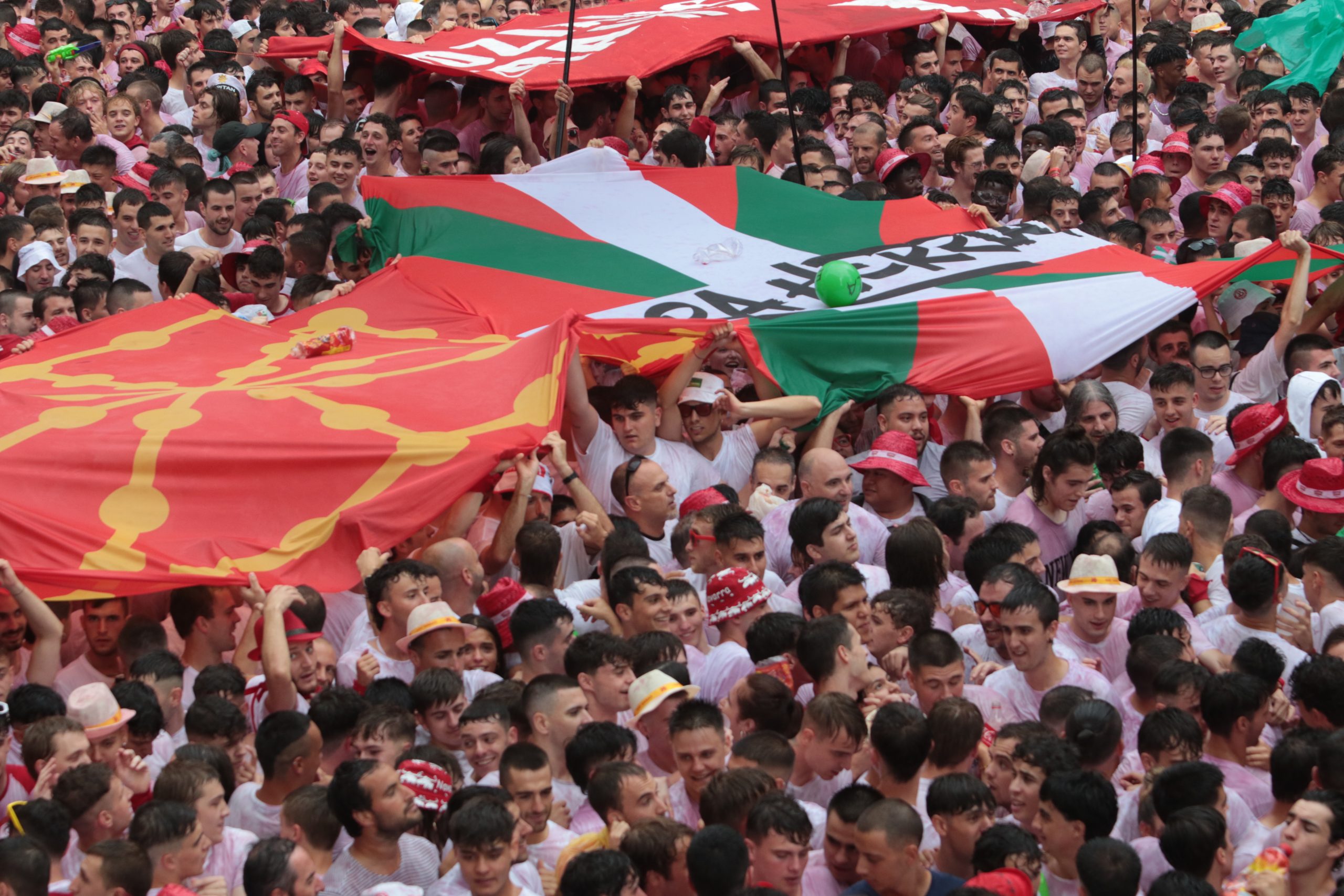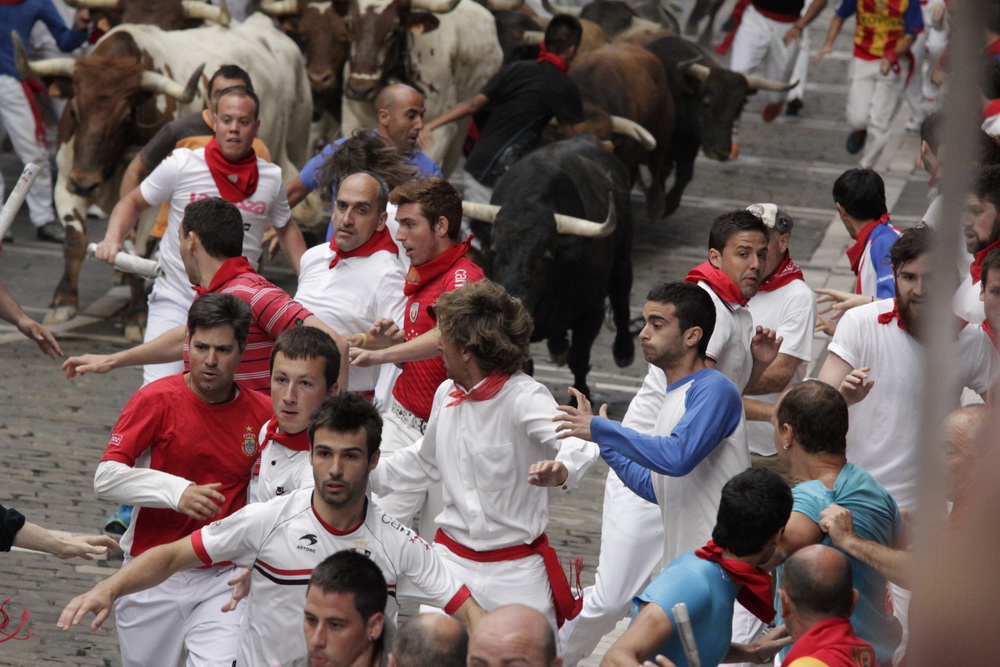There was a contingent of Garmisch adventurers that went to Pamplona every year for the Festival of San Fermin. Bomber was the most experienced runner in the group and told great stories about prior years and the close calls with the horns and riots between Basque locals and the police and military. The first time I heard him talk about Pamplona was when we were getting stoned together in Uganda in the shade of the Sikh temple wall, where they had come looking for a place to stay, but were turned away. I was immediately hooked on the idea of going to Pamplona and running with the bulls and was thinking about Spain when he and Goldie left me to walk through Kampala (3 miles with their packs) to the other Sikh temple to see if they had room for them to stay. The sun was going down and I worried for them. Very few people were on the street at night, it was a dangerous city after dark in 1983.
Essence
“The essence of pleasure is spontaneity.”
Germaine Greer.
At the end of the encierro in Pamplona the adrenalin’s edge softens and the sense of relief, satisfaction, fulfilment and even disappointment takes its place. At the same time, amid the Kaiku y cognacs, coffees and conversation, thoughts turn towards breakfast.
There was a time when groups of runners would take the short stroll down Plaza del Castillo, crossing Estafeta and up to Calle de la Merced where they would find a few spare benches outside La Raspa and sit down. The crowd would vary day to day but ultimately it would be a relaxed affair where a group of friends could eat a simple breakfast, share a few bottles of tinto with gaseosa and chat away in a mood of contented camaraderie. The odd jota would meanwhile float over from a nearby table. It was always the perfect way to ease into the day and to transition between the drama of the encierro and the rhythm of fiesta.
Not now.
Now the tables are all reserved: booked up in advance for the “right people” and the impromptu breakfast has been replaced by a stage-managed event. The very concept of spontaneity has been sacrificed because the breakfast “event” is so popular that everyone wants to join in. Everyone wants a piece of the action and to be seen to be there. When the essence of a thing vanishes what is left is an artificial facsimile of the original.
We have seen it before in so many ways. If you have ever dreamed of visiting a famous monument or notoriously beautiful site then you will be aware that the truth does not match the dream. That amazing view across to Niagra Falls, across the Grand Canyon or up The Mall to Buckingham Palace is not something you can enjoy in the way you imagined. This is because of the sheer mass of humanity getting in the way of the view. The forest of selfie sticks, or ego poles as someone else has described them, has to be waded through and any photograph has to be captured in that split second when a group of Japanese tourists, British schoolchildren or American coach tour is not right in the optimal place.
Popular sites are popular for a reason – people believe they are worth seeing “in the flesh”. Their essence is something that is worth enjoying in person. Yet in doing so we end up killing them through popularity. Pumphrey described it as the “devil’s bargain”, and that experience is greatly diminished not just because it has to be shared with dozens of Antipodean backpackers but because that sense of intimacy, that personal connection, is compromised.
It is very easy to leap up and blame the very modern phenomenon of social media for much of this. After all the attitude that drives so many of us to share our lives with the rest of the world has found a natural home in the digital age. Not only that but there is an accompanying theme of the need to prove how amazing our lives are while sharing them with the world. As a result the selfie stick pervades and every visit to a famous monument or site has to be captured as evidence not only that we were there, but that we were having the most amazing time while we were at it.
Yet it wouldn’t be fair to blame this solely on the rise of social media. As long as humans have been able to travel for leisure and been able to share that experience so the complaints of over-crowding and spoiling have existed.
The famous European Grand Tour was an expected trip for wealthier members of British society, particularly between the 17th and 19th centuries. Yet even as far back as then there were complaints that the circuit was getting too crowded and too rowdy. As Professor Kathleen Burke writes; “The undisciplined and sometimes violent behaviour of young Englishmen was often commented upon; certainly, for the staff of British embassies abroad, the activities of English visitors, ‘each vying with the other who should be the wildest and most eccentric’, were a major preoccupation. ‘Even Russians were impressed by the cohorts of wild English youth they found in the cities of western Europe.’”
Hemingway too acknowledged the down side to the popularity of something so beloved. “Pamplona was rough, as always, overcrowded… I’ve written Pamplona once, and for keeps. It is all there, as it always was, except forty thousand tourists have been added. There were not twenty tourists when I first went there… four decades ago.”
Social media has merely exacerbated this and contributed to it on a global level. Take a trip to San Sebastián, home of the most wonderful pintxos and tapas, and you will see what popularity has done to this culture. The principle of tapas, how tapas traditionally works in Spanish towns and cities, has been erased. In its place there is a much more stage-managed, tourist-friendly version where the bars do not want people to pop in for a mini and a single pintxo. Now they hand you a plate and encourage you to stay long and spend deep in order to keep the cash registers ringing. (This is not to denigrate the gastronomy of San Sebastián, which is outstanding).
This is not how tapas works elsewhere, but San Sebastián has become popular on a mercurial scale. When this happens a critical mass is reached and something has to give. As Hassan Bougrine points out; “…the essence of the capitalist economy is the need to ‘make money’.” No wonder that tradition is distorted. Though perhaps some would say that it is actually more positive – an evolution that gives the customers what they want. Given that a high proportion of those present in the Basque city are foreign travellers, that evolution to ‘Tapas Tourism’ is not surprising.
The intense beauty of Cornish fishing villages is such an allure that those with enough income have been buying holiday homes there for many years. This has had such a negative impact on the communities, effectively destroying the villages outside the holiday seasons, that bans on purchasing second homes now exist in a number of Cornish locations.
The essence of a thing is so fragile, so precious and so difficult to grasp that when we reach for it, it vanishes. Like grasping a handful of sand on the beach, the tighter we hold on the less we are able to keep a grip on it and the sooner it slips through our fingers and is gone. We rarely aim to destroy the essence of a thing intentionally, we merely realise that it has happened almost by stealth and the truth of our impact has crept up on us, seemingly out of nowhere. Yet, destroy the essence of something we most certainly do.
With something fragile and something so desirable the answer, surely, is to handle with care. We want to reach out and grasp something that shines and yet, like ice crystals, the very touch itself can destroy the thing. In this case it must be wiser to enjoy a thing in the moment and be prepared to walk away, to change and to sacrifice the very thing we love so as not to destroy it. This is not easy for, in the moment, we are normally overtaken by the desire to sink ourselves into the experience. Similarly we often destroy one small cut at a time and may not recognise it until it is too late.
Surely as soon as we feel a thing we love is at risk of being stage-managed or that its essence has been compromised or killed by popularity we should be prepared to walk away. Perhaps we should even be prepared to walk away long before then. Take the post-encierro breakfast as an example. If we attend every single day are we expecting too much from it? Are we forcing the fun to fulfil an expectation or are we merely contributing to the destruction of its essence. Once something becomes routine it is no longer special.
That is not to say that such things should cease and many people find enjoyment in routine. Some would even claim that they are able to hold onto the essence of something even when it is a routine.
One of the most common complaints is that the encierro has been destroyed through being too popular. Complainants point to the crowded streets and the high proliferation of non-Spanish runners (estimated to be 45% in 2017) as contributing factors. Talk to any “old timer” and they will generally yearn for a time when the streets were quieter, when you had space to run and when you could actually see the bulls. The essence of the encierro has gone, replaced by backpackers, beginners and wishful thinking.
The evidence does not totally support this view.
The encierro has been popular for a very long time and crowding is most certainly not a modern phenomenon. Old black and white photographs and even film reels show crowded streets, a crowded Plaza de Toros, pile ups and packed barriers going back many decades – all seemingly without killing off the soul of the encierro.
Additionally, the modern crowding is not getting any worse according to figures released by the Ayuntamiento of Pamplona. An article published on sanfermin.com highlighted the fact that some years, such as 2012, saw over 20 thousand runners take part across the 8 days, while others much less. 2017 was estimated to have had around 16 thousand runners. Volumes also vary dramatically from day-to-day. It would appear that a patient and determined runner can find space on the right day if he bides his time and takes his chances.
So while it is true that we often smoother the thing we love and destroy its essence, sometimes the thing we love is not actually dead and we just need to look at it slightly differently. Perhaps, as in San Sebastián, we need to experience it differently and re-learn what the essence now is. Ultimately we need to acknowledge that the essence of a thing is fleeting, transient and that we should enjoy what we can of it while it lasts.
Ya conocemos los encierros para Sanfermin 2019
Hoy hemos conocido los carteles definitivos para la Feria del Toro de Sanfermin de 2019 en la Casa de Misericordia. Abrirán los encierros los astados de Puerto de San Lorenzo y terminaremos las fiestas con Miura. Veremos a Cayetano y al Juli en la Feria y no faltará Roca Rey. Podrá ser un Sanfermin de toros y encierros inolvidables.
El encierro de Sanfermin en el video de Justin Bieber y Ed Sheeran
¿Crees que te estamos mintiendo si te decimos que Justin Bieber sale disfrazado de helado corriendo en el encierro de Sanfermin en su último video (I don´t care) junto a Ed Sheeran? Pues no te mentimos. Es verdad. El pasado 10 de mayo se estrenaba el video I don´t care en el que colaboran Bieber y Sheeran. Éste último es uno de los autores de la canción y a su vez intérprete y se intercala con Justin como primera voz del tema a lo largo de la canción.
El video es una risa porque mezcla imagen real y animación y le dan rienda suelta a la imaginación a nivel gráfico. Se podría decir que lo pensaron en una juerga sanferminera y nadie se ha atrevido que se les ha ido la pinza porque son Sheeran y Bieber. Y tiene pinta de que se rieron bastante mientras lo grabaron ya que ambas estrellas del rock salen disfrazados de diferentes mascotas mientras de fondo aparecen diferentes situaciones festivas. Entre ellas se cuela Sanfermin donde superponen a Bieber haciendo como que corre. Le invitamos a venir de verdad que mola más, aunque sea a verlo desde un balcón de Sanfermin.

El video lleva más de 2,5 millones de reproducciones y todos ellos habrán podido detenerse a los 2,43 segundos para rascarse los ojos tras pensar “Creo que he visto a Justin Bieber corriendo el encierro vestido de helado”… y así es. Rásquese. Pero Justin sale corriendo el encierro. No salen toros para que no les escriba el PETA, pero tiene cierto sentido ya que el tema de cuenta que no se encuentran bien en una fiesta, a no ser que estén junto a su amor. Veniros los cuatro en julio, que es mejor la realidad que la ficción.
No obstante, vemos la trascendencia del encierro de Sanfermin que se cuela en las mejores juergas internacionales.
The Running of the Bulls is rejected by many Insurance companies
Bill lives in Ontario, Canada. He is a monitor of risk sports and he remembers the first time he ran the running of the bulls from the Santo Domingo stretch. A runner by his side, with a look of panic, told him just before the bulls were released, “I don’t think my travel insurance policy will cover this.” And it turned out to be that case. At times, Bill has thought about taking part in the running of the bulls since then, but he feels the risk is higher than the profession he performs in his working life as a monitor of risk sports.
Travel insurance companies don’t cover risky behaviour.
Chris after his experiences in the 1995 Sanfermines, expressed his attitude as follows: “Forget about Bungee jumping, forget about the jalopy car racing, forget the rest…This really guarantees an authentic adrenaline boost. There are no security nets; there are no safety belts or airbags. You and a dozen bulls running in among a couple of thousand runners who are just as terrified…as you.”
Chris encourages his American colleagues to take part in the running of the bulls and gives some sound advice, considering that he has been a runner from abroad. His final piece of advice is “Ensure that you have good medical insurance, and it is probably wise to make sure that your will is up to date.”
Planning to run with the bulls? Jump off cliffs?
Check your coverage
There are two insurance policies made by Pamplona City Hall and by the organizers of the bull fair – the Casa de Misericordia. These serve to cover compensations in cases of disablement or death. Those injured or wounded and born within the province of Navarra, or from neighboring provinces, receive free medical treatment from The Public Health Service. However, foreigners are charged through their medical insurance. Anyone injure or wounded will obviously be given full treatment with no questions asked, but later The Navarra Health Service will try to have the cost paid by the patients medical insurance.
The hospital is obliged to charge by law
The Navarra Public Health Service is obliged, by law, to charge for its health care, when there always exists a third party to pay, as occurs in the case of traffic accidents. Consequently, in the case of people who are resident in another country, they must try to find someone to take responsibility for the costs. In any case, all patients can leave the hospital without paying the cost – which does not occur in some other countries – and there have been cases where the Embassy of the infirm person has had to affront the costs of their citizens in cases of insolvency. In the case of other European countries, there exists a corresponding compensation system between the different national health systems.
When it comes to paying, the costs in Navarra are quite cheap in comparison with other health systems in the first world. So, consequently, if someone decides to take part in the running of the bulls without any kind of insurance, and should he be admitted to hospital, he can be assured of receiving good attention and the hospital bill will be lower than if it had occurred in any other place.
Difficulties to get insured
Whoever comes to Pamplona from abroad, could find some problems if they need treatment arising from some accident in the running of the bulls. For example, World Nomads is one of the biggest travel agencies in the world for travel insurance. In its publicity on the web page, Nomads announces instant universal insurance all round the world, but when faced with a specific request for travel insurance from an American citizen who wanted to take part in the Pamplona running of the bulls, the answer was. “Regretfully, as part of our policy we cannot cover you as an American citizen or resident to take part in the running of the bulls.”
The Allianz Insurance Company, in its coverage of travel agencies who organize trips from Australia, New Zealand and The United States, has a list of activities which are covered and a list which is excluded from coverage. The traveler can take a ride on an elephant and if there is a fall, there is coverage… but if a Polar Bear attacks off the track of the polar safari, besides dying of fright or even really dying, there is no insurance cover in this case. And watch out…another one of the activities excluded is the Running of the Bulls, whether or not there are any safaris…
Without specifically stating Pamplona, but using the expression “running with the bulls” the text reads: “I assume and accept the risks and dangers and the possibility of suffering personal harm and being hospitalized…” This kind of formula is now common to inform tourists that they have been warned of the risks and the element of chance which lies in the running of the bulls…
For example, another recent warning came from the Sidney Morning Herald, in Australia, when it recently informed its readers that jumping from the Navarreria fountain or taking part in the running of the bulls, is not recommended by the principal insurance companies.
Another example we could consider comes from The Association of American Programs in Spain which specifically recommends that travelers should not take part in risk activities and cites the running of the bulls as a clear example of this. It reminds travelers that both tourists and local runners have both suffered serious and mortal accidents over the years in the running of the bulls.
Another of the formulas being used at present by some agencies is to have a form signed which renounces all rights of suing made by the travelers if they take part in the running of the bulls and something happens to them. These forms free the agency from all responsibility in the matter and oblige the person who signs to assume that “I am conscious of the risks inherent in the running of the bulls and I am conscious of other added risks and dangers coming from other runners (…) that there are runners who are unaware of the dangers inherent in the running of the bulls and who could act irrationally and prejudice me in the participation of the running of the bulls.(…) I am conscious that the enjoyment and the emotion of the running of the bulls comes, in part, from the participation of the bulls and if I choose to take part it is at my own volition and risk, and my responsibility and at my own expense.”
There are also some overstatements such as the agency that states that in Sanfermin, the muggings increase exponentially and it is not safe to go out alone at night. The solution, of course, is to contract insurance…
La música de la escalera de Sanfermin a ritmo de dance music con el DJ Jean Carles Ferrer
Al Dj Jean Carles Ferrer no le deja indiferente sanfermin y ha realizado su personal aportación musical con el tema “San Fermín On The World“. De estilo Dance Music asume la tradición musical sanferminera y le da un aire más actual. Nos contactó por Facebook y nos contaba: “Os presento mi nuevo trabajo Musical llamado San Fermín On The World una nueva canción de San Fermín al más estilo y puro Dance Music y con todo mi cariño para estas Fiestas de San Fermín 2019.”
Jean Carles Ferrer trabaja y vive en Ibiza como Dj y realiza sus propias composiciones. En este video podemos ver la evolución de otras de sus composiciones sobre el propio teclado.
La licencia del tema recae sobre IBIZA SOUND DELUXE RECORDS y SGAE (16611264) y ya está disponible en Spotify.
Así flipa un ruso con el encierro de Sanfermin
Siguiendo el estilo marcado por James Rhodes, el “Ruso Mochilero” ha decidido enamorarse poco a poco de nuestras costumbres, conocer el país en profundidad y contarlo todo por su canal de video. En su lista se encuentra el encierro, pero como estamos en mayo, se ha grabado viendo un encierro en la tablet. El resultado es bastante gracioso y transparente y nos ha parecido interesante compartirlo. Su lema, lo mejor, reacción con pasión.
«Estoy flipando!» Evento muy emocionante e interesante!
La reacción de nuestro ruso mochilero además la deja por escrito en los comentarios del video. “Definitivamente me gustaría visitar Sanfermin! El nivel de emoción de esta festivil no es inferior de la celebración del Año Nuevo. ¿Me interesa cuál es la idea de esta fiesta? ¿De dónde viene esta tradición? Se que las corridas de toros están cada vez más prohibidas en España, y estoy de acuerdo con esto. No me gusta la burla y la sobreexposición de los animales, y especialmente no apoyo su asesinato por el entretenimiento”, apunta EV.
No se escapa el protagonista de este debate solo con estas palabras y afronta varias de las contradicciones más habituales a las que se enfrenta quien ve el encierro.
Esta fiesta parece inofensiva para los animales y más peligrosa para las personas.
Según escribe Mochilero: “Esta fiesta parece inofensiva para los animales y más peligrosa para las personas”. No sé qué está pasando en la parte final del fiesta, pero espero que los toros sigan vivos. Pero aun así … ¿Por qué las personas se permiten tratar a los animales como un medio para satisfacer sus necesidades? ¿Por qué no respetamos a las criaturas creadas por Dios: las consumimos para comer, las mata?os por diversion, las encerramos en jaulas y zoológicos? En mi opinión, en la actualidad, una persona tiene suficientes alimentos diferentes para alimentarse, y más que suficiente entretenimiento para su mente. ¿Por qué las personas se comportan tan inconscientemente y se dedican a consumicion de animales en todas formas?”
Y concluye con “Mi reaccion: y positiva y negativa. ? ? ¿Me interesa cuál es la idea de esta fiesta? ¿De dónde viene esta tradición? Y cual es vuestra reacción a este evento?”
Le pasaremos unos enlaces de Sanfermin.com para que descubra el origen del encierro y si quiere verlo desde un balcón puede alquilar uno aquí mismo.
Ayer soñé con un 6 de Julio anunciará las fiestas de Sanfermin 2019
El cartel ‘Ayer soñé con un 6 de julio’, de Edurne Taínta ha sido elegido para anunciar sanfermin 2019 al ser la más votada con 3.180 voto.
Esta ha sido la edición con la mayor participación desde que se puso en marcha este sistema en 2008 con 10.629 personas, 4.118 más que el año pasado, lo que representa un aumento del 63%.
Una obra de César Barrio anunciará la Feria del Toro de 2019
La Feria del Toro de 2019 ya tiene cartel y es de César Barrio. Este nombre se une a la excelente colección de carteles que desde 1959 han cumplido con su misión de anunciar la feria entre las ferias torunas. La obra tiene su miga porque te hipnotiza, te come, envuelve al toro y te lleva a la feria de un sanferminazo. No queda duda qué anuncia y quién organiza.
La Casa de Misericordia dejó claro hace muchos años que la feria era del toro y no de los toreros, y en los carteles hace igual; Los carteles son de los artistas y no hay lugar para concursos. La serie histórica es vibrante y de gran calidad, con variedad de técnicas y estilos y a la vez uniforme en el mensaje. Hay de todo y muy bueno con obras de Mariano Sinués (1984), José Antonio Eslava (1967 y 2017), América Sánchez (1987) Joaquín Vaquero Turcios (1968) y Eduardo Úrculo (1986) entre otros. Estos dos últimos autores participaron activamente en la formación de César Barrio que nació en Oviedo en 1971, vivió 13 años en Pamplona y estudió arquitectura en la Universidad de Navarra (1999). Actualmente Barrio vive y trabaja en Madrid aunque realiza estancias en estudios de Lisboa y Viena.
¿Quién es César Barrio?
Para empezar puedes echar un ojo al blog de César Barrio para intuir de dónde le mana el arte. Si quieres algo menos intenso puedes atajar con el resumen de Global Square Magazine. César Barrio es un reconocido artista que destaca por la profundidad de su obra, el sentido que tiene todo lo que hace y la versatilidad de las técnicas que aplica. Por ello, César Barrio colabora activamente con estudios de arquitectura, entre los que destacan las obras realizadas para el Estudio Vicens-Ramos en Córdoba, y se puede permitir intervenciones que le apetecen como la realizada en el espacio Las Catedrales de Aránzazu donde se recluyó dos meses y creó cinco obras de gran formato en homenaje a Gaston Bachelard (Rituales del imaginario).
Barrio buscaba algo distinto y realizó varias intentonas hasta encontrarse satisfecho con su trabajo. Cuenta César Barrio a la web Feria del Toro que el relato de esta obra se basa en dos temporalidades distintas: la plaza como algo matérico y el toro con un trazo más delicado. Nosotros hemos visto un comecocos de Atari de lejos y luego hemos aterrizado. César Barrio lo explica en este video:
Las reproducciones del cartel de 2019 pueden ser adquiridas en dos formatos, al precio de 3 € y 2 €, en la recepción de la Casa de Misericordia de Pamplona, en la Plaza de Toros o través de la web feriadeltoro.com.
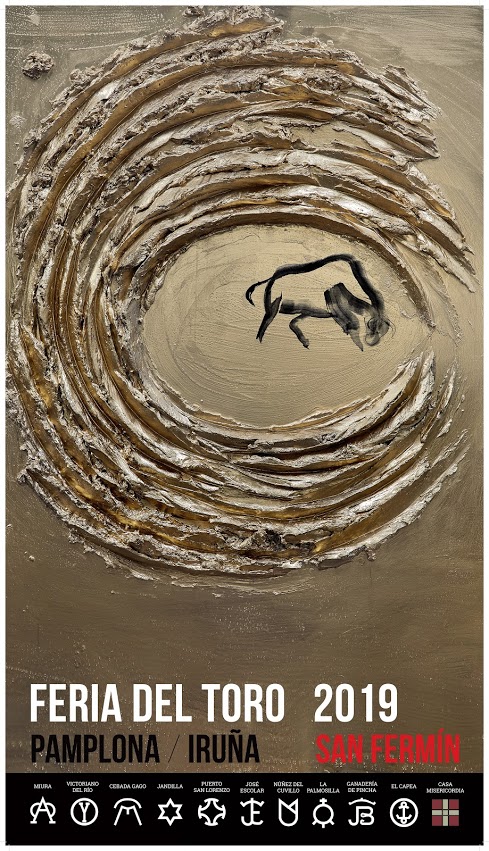
Aquí está el cartel de San Fermín 2019
Aqui está el cartel que anunciará y protagonizará Sanfermin 2019. El alcalde de Pamplona, Joseba Asiron, la concejala delegada de Cultura y Educación, Maider Beloki, y la directora del Área, Maitena Muruzábal, han dado a conocer este mediodía en el Palacio del Condestable las ocho obras finalistas del concurso. Entre ellos está el que anunciará las fiestas de este año.
Nos ha hecho mucha gracia la propuesta del cartel sanferminero que emula la acción de Bansky “Girl with ballon”.
Junto a ellos han participado en la rueda de prensa miembros del jurado que en esta ocasión ha estado compuesto por María Tellechea, experta en comunicación designada por la Asociación Navarra de Empresas de Comunicación; Marisa Mantxola, diseñadora gráfica; María José Recalde, artista plástica, Carlos Cenoz, artista urbano e ilustrador; Javier Eguiluz, artista plástico, y Javier Manzanos, técnico municipal de Artes Plásticas.
El premio está dotado con 3.600 euros.

